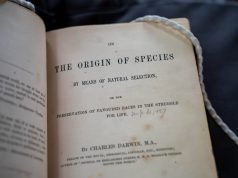Want to create a long-lasting memory? Form an association with other memories.
Credit: © Alexandr Vasilyev / Fotolia
Memories that stick with us for a lifetime are those that fit in with a lot of other things we remember — but have a slightly weird twist.
It’s this notion of ‘peculiarity’ that can help us understand what makes lasting memories, according to Per Sederberg, a professor of psychology at The Ohio State University.
“You have to build a memory on the scaffolding of what you already know, but then you have to violate the expectations somewhat. It has to be a little bit weird,” Sederberg said.
Sederberg talked about the neuroscience of memory as an invited speaker at the Cannes Lions Festival of Creativity in France on June 19. He spoke at the session “What are memories made of? Stirring emotions and last impressions” along with several advertising professionals and artists.
Find your dream job in the space industry. Check our Space Job Board »
Sederberg has spent his career studying memory. In one of his most notable studies, he had college students wear a smartphone around their neck with an app that took random photos for a month. Later, the participants relived memories related to those photos in an fMRI scanner so that Sederberg and his colleagues could see where and how the brain stored the time and place of those memories.
From his own research and that of others, Sederberg has ideas on which memories stick with us and which ones fade over time.
The way to create a long-lasting memory is to form an association with other memories, he said.
“If we want to be able to retrieve a memory later, you want to build a rich web. It should connect to other memories in multiple ways, so there are many ways for our mind to get back to it.”
A memory of a lifetime is like a big city, with many roads that lead there. We forget memories that are desert towns, with only one road in. “You want to have a lot of different ways to get to any individual memory,” Sederberg said.
The difficulty is how to best navigate the push and pull between novelty and familiarity. Novelty tells us what is important to remember. On the other hand, familiarity tells us what we can ignore, but helps us retrieve information later, Sederberg said.
Too much novelty, and you have no way to place it in your cognitive map, but too much familiarity and the information is similarly lost.
What that means is that context and prediction play critical roles in shaping our perception and memory. The most memorable experiences are those that arise in a familiar and stable context, yet violate some aspect of what we predict would occur in that context, he said.
“Those peculiar experiences are the things that stand out, that make a more lasting memory.”
Story Source:Materials provided by Ohio State University. Original written by Jeff Grabmeier. Note: Content may be edited for style and length.











